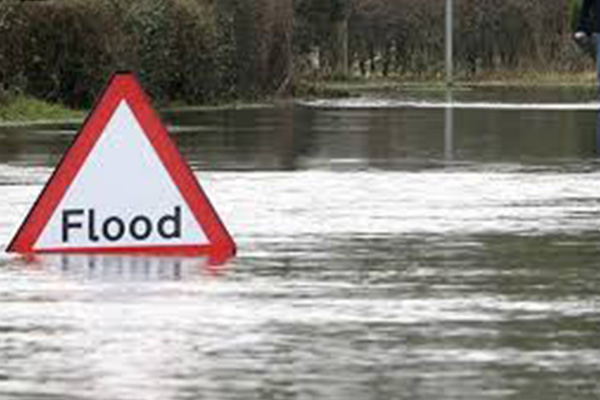Floods hit homes in England as wild weather batters Europe
Moorland, Somerset (CNN) — Like a modern-day King Canute, Sam Notaro is determined not to let rising waters flood his home.
He lives in Moorland village in Somerset, southwest England, which has been hit hard by weeks of flooding.
Streets have turned into rivers, cars are submerged up to their windscreens, and homes have been abandoned.
But Notaro is a lone holdout.
He’s created his own flood defense barrier, using a digger to raise a soil embankment topped with heavy clay to act as a seal.
England
So far, it has kept the worst of the waters out of his home, with the help of pumps — but the question is how long it will hold.
“Like I say, if it rises a meter, I don’t know if it will be enough. I don’t know,” he said.
He may be the only one left, but he’s not without help in his struggle against the elements.
Marines — part of a hundreds-strong military deployment by the UK government — waded through the waist-high water Tuesday to help bolster his makeshift flood defenses.
Notaro appeared stubbornly resolved to continue his battle despite the losing odds. “We were backed into a corner. It was low so we pushed some soil up, and then you’ve got to keep going haven’t you?” he said.
King Canute, an 11th Century ruler of England, Denmark, Norway and part of Sweden, by legend went to the seashore and tried to hold back the rising tide — but failed.
In the low-lying Somerset Levels, where some homes have been under water for weeks, many will know his sense of powerlessness.
Dead birds litter beaches
Strong winds forecast in western England on Wednesday may add to people’s woes. And even if the heavy rain stops, ground water levels are now so high that it could be weeks before life returns to normal.
And Britain is not the only place facing wild weather.
Huge waves are crashing onto the Portuguese coast, causing extensive damage, and there are high wind alerts in parts of Ireland, which faces the worst storm yet of the winter. Cork and Kerry, where winds could gust at 80 to 100 miles per hour, are most at risk.
Winter flood warnings have also been issued in parts of Brittany, in northwest France.
Meanwhile, the beaches of France’s Atlantic coast are littered with dead birds, casualties of exhaustion after days of battling relentless wind and rain.
The country’s League for the Protection of Birds estimates more than 5,000 birds have died in total, many in the Charente-Maritime, Loire-Atlantique and Vendee areas.
‘Money is no object’
Amid increasing questions over the authorities’ response, British Prime Minister David Cameron said Tuesday that “money is no object” in the relief effort, and promised more troops to help despairing homeowners.
“Britain is facing … its wettest winter in two-and-a-half centuries, and some of the worst flooding in decades,” he said at a Downing Street news conference. “In the past week, more than 800 properties have been affected.”
There are still 16 severe flood warnings in place — meaning there is danger to life — most of them in southeast England, as well as hundreds of lower level flood warnings and flood alerts, Cameron said. And it’s not over yet.
“There is absolutely no sign of this threat abating and with further rain and strong winds forecast throughout the week, things may well get worse before they get better,” he warned.
He pledged up to $16 million to help farmers whose fields are under water.
Opposition leader Ed Miliband, of the Labour Party, told UK media that the flooding was a “wake-up call” and that investing in flood defenses had to be a priority for the government.
Some of the worst affected areas in recent days are in the Thames Valley west of London.
Well-heeled towns and villages in Surrey and Berkshire, including Wraysbury, Chertsey and Datchet, near Windsor Castle, have been inundated as the Thames has burst its banks on its way downstream toward the capital.
Sandbags lined the entrances to small business and homes in Datchet menaced by the river’s murky brown waters.
The Thames Barrier, which is deployed to prevent the tidal river flooding central London with devastating consequences, has been repeatedly pressed into action in recent weeks.
“The barrier is working very, very hard,” said Toby Willison, regional director for the Environment Agency, which operates the defense system — which works by stopping high tides coming in when the river level is already high.
“At the moment it’s operated 29 times since the beginning of December … which when you consider it was completed in 1982 and has only opened 154 times since 1982 — it is operating much more frequently at the moment than it ever has done in the past,” he said.

